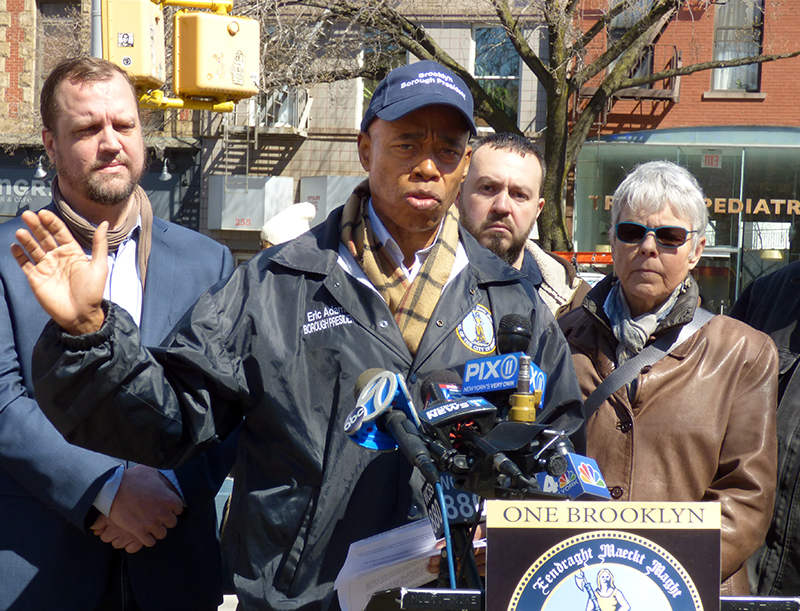Flatbush Ave. businesses call for moratorium on traffic congestion program
BP Adams: Local stakeholders need a voice in city’s decisions

Will Clearing Congestion Hurt Businesses? Brooklyn Borough President Eric Adams joined local Flatbush Avenue business owners to call for a moratorium of the city’s new Clear Curbs pilot program, which is supposed to clear congestion along the avenue during peak hours. Shown from left: James Ellis, executive director of the North Flatbush BID; BP Eric Adams; Abed Awad, North Flatbush BID board member; and Regina Cahill, president of the North Flatbush BID. Photo by Mary Frost
Monday was the first day of the NYC Department of Transportation’s (DOT) Clear Curbs pilot program along Flatbush Avenue in Brooklyn, and local business owners were not happy.
“This morning it was like a SWAT team, with police vehicles, tow trucks, people getting ticketed. It was kind of a mess,” Regina Cahill, president of the North Flatbush BID, told the Brooklyn Eagle.
The program restricts curbside parking and loading along Flatbush Avenue from Grand Army Plaza to Tillary Street during weekday peak hours, and is meant to ease congestion along the busy thoroughfare.
